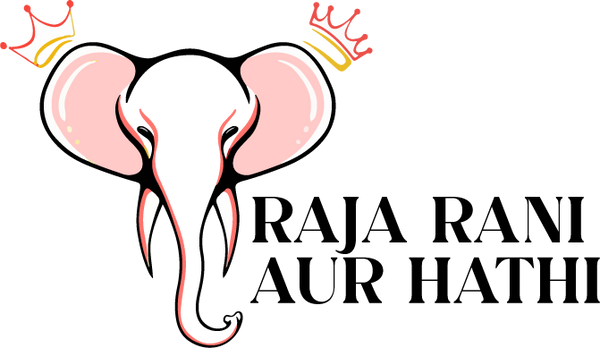Jewelry in royal India wasn’t just about adornment—it symbolized power, wealth, culture, and divine connection. From intricately carved gold necklaces to gemstone-studded turbans, both the Raja (king) and Rani (queen) of traditional Indian courts wore masterpieces that reflected their stature and the rich heritage of their times. Here’s a curated list of the stunning jewelry pieces that defined their majestic presence.
👑 For the Raja (King):
1. Necklaces
Heavy gold necklaces with religious symbols, animal motifs, or heritage engravings.
2. Armlets (Bahu Bandh)
Worn on the upper arms, crafted from gold and embedded with precious stones.
3. Rings
Signet rings with crests or gemstone rings to reflect royalty and personal style.
4. Earrings
Subtle studs or elaborate designs with delicate hanging elements.
5. Royal Headwear
Turbans adorned with jeweled brooches or crown-like embellishments.
6. Waistband (Kamarband)
Gold or silver belts decorated with gems for ceremonial occasions.
7. Jeweled Footwear
Embellished sandals or slippers fit for a royal stride.
👑 For the Rani (Queen):
8. Necklaces
Layers of chokers, long pendant malas, or pearl strings with intricate motifs.
9. Earrings
Jhumkas and chandbalis featuring pearls, rubies, and artistic craftsmanship.
10. Nose Rings (Nath)
Large, detailed nose rings—some connected to the hair with a chain.
11. Bangles/Kada
Dozens of gold, silver, or glass bangles stacked beautifully on the wrists.
12. Anklets (Payal)
Delicate or heavy anklets, often with tiny bells that chimed with every step.
13. Rings
Gemstone rings on multiple fingers, showcasing variety and status.
14. Hair Ornaments
Hairpins, headbands, and decorative clips, sometimes set with pearls.
15. Waistband (Kamarband)
Similar to the king’s, but often more delicate and elaborate.
16. Toe Rings
Usually made of silver, worn on both feet, especially by married women.
17. Maang Tikka
A central head ornament that rested on the forehead, symbolic and stylish.
18. Armlets (Bajuband)
Often designed to match earrings or necklaces, worn on the upper arm.
💎 Materials and Styles Used in Royal Jewelry:
19. Gold
The foundational metal for most regal adornments.
20. Precious Stones
Including diamonds, rubies, emeralds, sapphires, and pearls.
21. Meenakari
Colorful enamel work, popular in Rajasthan and Mughal designs.
22. Kundan
Traditional technique of setting gemstones in gold foil.
23. Temple Jewelry
Inspired by South Indian temple architecture and deities.
24. Peshwai Jewelry
Reflecting Maratha nobility with Mughal artistic influence.
25. Guttapusalu
A South Indian necklace with pearl bunches and ornamental pendants.
26. Polki
Uncut diamonds set in pure gold—a Mughal-era classic.
💫 Modern-Day Inspirations & Examples:
27. Jaipur Rajasthani Rajwada Earrings
Hand-painted designs inspired by Jaipur royal court aesthetics.
28. SHVET Raja Rani Miniature Art Earrings
92.5 silver earrings featuring hand-painted miniature art.
29. Tribe Amrapali Gold-Finish Raja Rani Necklace
Sterling silver jewelry with gold polish and regal charm.
30. Raja Rani Couture
A fashion label offering outfits and jewelry inspired by royal traditions.
✨ Final Thoughts:
The jewelry of the Raja and Rani was far more than decorative—it was a powerful display of identity, faith, and legacy. Even today, many bridal and festive collections take cues from these age-old designs, blending tradition with timeless elegance. Whether you’re a history buff, fashion enthusiast, or bride-to-be, the royal aesthetic continues to inspire.


